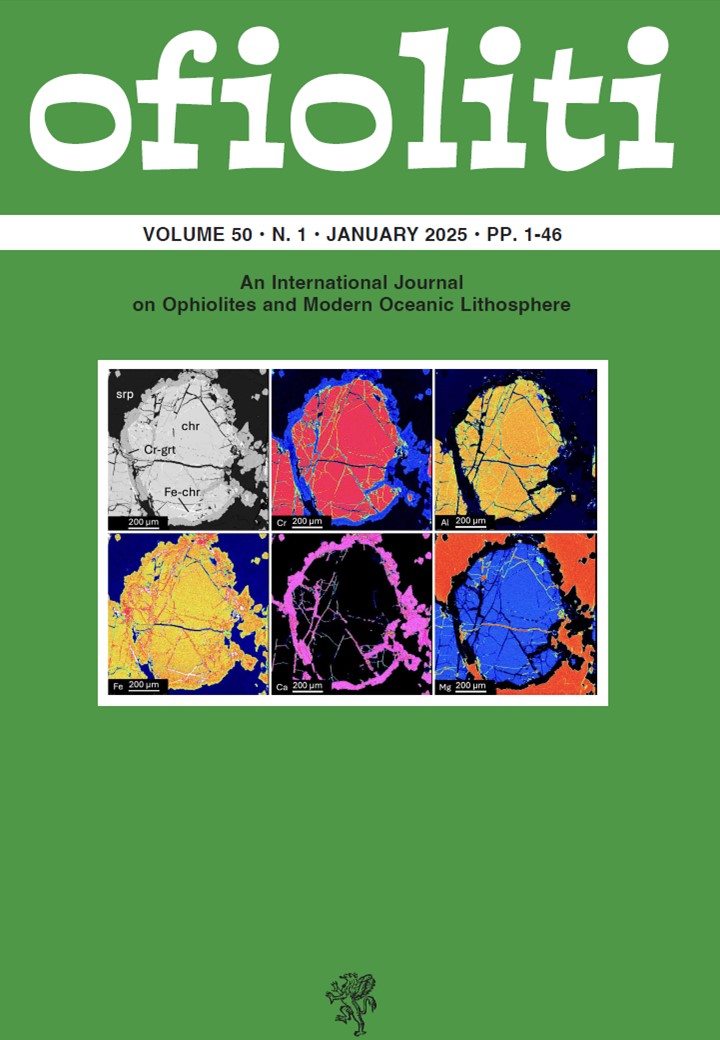THE EFFECT OF MULTIPLE ALTERATION PROCESSES ON SKYROS CHROMITITES (NORTHERN SPORADES, GREECE)
DOI:
https://doi.org/10.4454/ofioliti.v50i1.575Keywords:
chromitites, ophiolites, Cr-garnets, Skyros IslandAbstract
Skyros Island, in the Aegean Sea, hosts significant mafic-ultramafic bodies scattered within the subophiolitic mélange. Small chromite deposits crop out in three close localities, Northern Agios Iohannis, Agios Iohannis and Agia Alexandria. Chromitites and their host rocks are heavily altered and display an uncommon mineral assemblage. Primary minerals include orthopyroxene and clinopyroxene relics along with unaltered chromite. Northern Agios Iohannis spinels have average Cr# = Cr/(Cr + Al)] of 0.74, compatible with a boninitic parental melt, while Agios Iohannis and Agia Alexandria have lower Cr# (0.65-0.68), compatible with a MORB-like parental melt. Considering the proximity of the three localities, the changes in mineral chemistry can be due to: i) Genesis of the chromitite pods in different dunite channels, from different parental magmas. ii) Evolution from MORB-like to boninitic melts during subduction. iii) Melt/rock interactions with variably depleted peridotite sources; iv) Genesis of the chromitites in compositionally different mantle slices, tectonically dismembered and juxtaposed. Three alteration events were detected: i) serpentinization, with replacement of primary silicates by serpentine (widespread at Agios Iohannis and Northern Agios Iohannis and more limited at Agia Alexandria); ii) chloritization, involving a reaction of chromite and serpentine with oxidizing fluids to form Fe-chromite and chlorite; iii) reaction of Fe-chromite and serpentine to form Cr-garnets with a composition lying in the uvarovite-andradite solid solution (at Agios Iohannis and Northern Agios Iohannis, absent at Agia Alexandria). Despite the restricted geographical area, the three localities display heterogeneity in the primary and secondary features, highlighting compositional variation of the parent melt and local changes in fO2 and fS2 during the alteration events. The order in which the alteration events occur in an ophiolite can strongly affect the final mineral assemblage. Cr-garnets can be Fe- or Al-rich based on the magnitude and order of previous alteration stages. In particular, chloritization events lead to loss in Al in the spinel, so the garnet forming reaction will lead towards uvarovite-andradite solid solution products.


 Edizioni ETS s.r.l. LUNGARNO MEDICEO 16 - 56127 - PISA
Edizioni ETS s.r.l. LUNGARNO MEDICEO 16 - 56127 - PISA